Trismus is a condition in which muscles spasm or contract due to infections or other conditions, that prevents opening of the mouth. Common causes of trismus are:
It is a Pre-Cancerous condition of Oral Mucosa.
The word Pre-Cancerous does not mean early stage of cancer or a condition that is soon going to turn into cancer. It means that probability of having cancer in a mouth having OSMF is 8-10 times more as compared to a mouth with healthy oral mucosa.
This is mainly caused due to habits like pan chewing, betel-nut (Supari) chewing, smoking, eating tobacco (Gutka) excessive spicy foods etc.
So by reading the list of contributing factors you can easily assume that India is having high prevalence of OSMF
In this there is progressive loss of elasticity of the cheeks leading to decreased mouth opening and burning sensation while eating.
The treatment of submucous fibrosis may depend on the severity and the staging of the disease. Depending on this either a conservative or a surgical approach could be planned.
First and foremost is to go and see your oral surgeon for his advice and diagnose it .Leave the habit if any, immediately. If the condition is not severe it may not need any surgical intervention, only active physiotherapy may suffice. If the mouth opening is limited then a surgical intervention would be required to achieve the normal opening.
Case: Release of OSMF band and reconstruction with Collagen
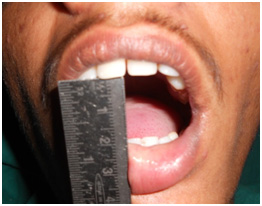
Preoperative mouth opening of 20mm
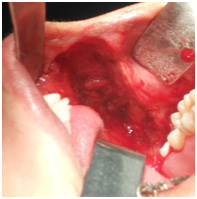
Relase of submucous fibrous bands
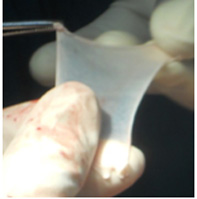
Artificial Skin (Collagen)
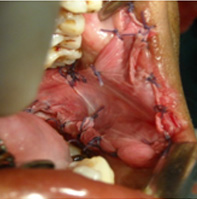
Repair with Collagen
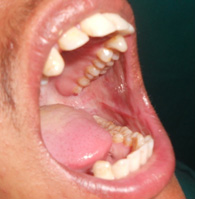
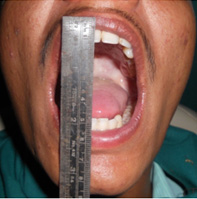
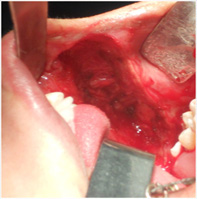
Temporo-Mandibular joint (TMJ) Ankylosis-
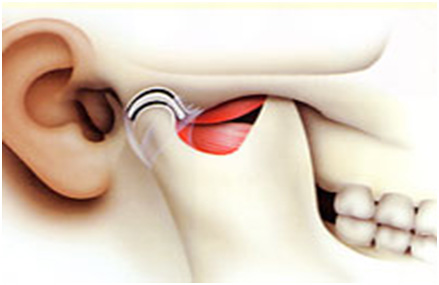 The TMJ is also called as jaw joint present in front of ears on both sides. It the joint between mandible (Lower Jaw bone) and Skull.
The TMJ is also called as jaw joint present in front of ears on both sides. It the joint between mandible (Lower Jaw bone) and Skull.
Helps in movement of lower jaw that is why very crucial in mouth opening, speaking, chewing, eating.
In some diseases and cases the joint becomes stiff and fused with the skull resulting in loss of movement and ultimately patient fails to open the mouth- a condition termed as TMJ ANKYLOSIS.
Trauma/accident which causes fracture/injury to the joint is the most common cause of the TMJ ankylosis.
2nd common cause is injury to the joint of a new born baby at the time of birth/delivery.
Unfortunately Children are more commonly affected from this condition. When a child falls on ground/ met with any accident which results in injury to lower jaw/chin there might be direct/indirect injury to the jaw joint also. In such cases either there will be a bleeding within the joint space or an internal fracture of the head of mandibular condyle.
As we know healing is much faster in children so during healing there will be rapid and irregular bone formation occurs in the injured joint space and as a result the joint becomes stiff.
The most devastating effect of such joint stiffness is lack of future growth of child’s lower jaw and lower face along with inability to take proper food and nutrition.
Case: TMJ Ankylosis in Child Patient
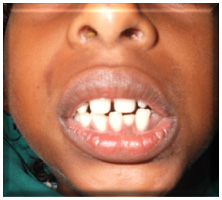
PreOp mouth Opening =0mm
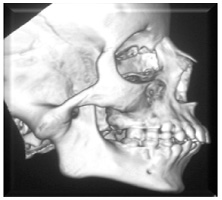
3-D CT Scan Showing bony fusion at TMJ
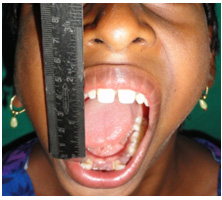
Post Op mouth Opening =40mm
Case: TMJ Ankylosis in Old Patient
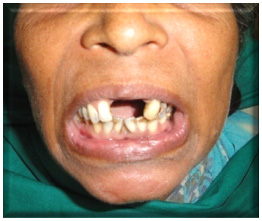
PreOp mouth Opening =0mm
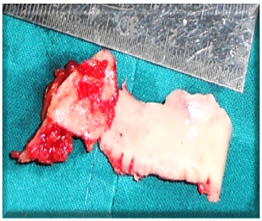
Ankylotic Bony Mass removed from Joint
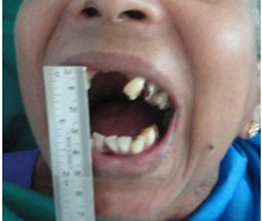
Post Op mouth Opening
Role of Distraction Osteogenesis in TMJ Ankylosis
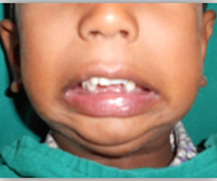
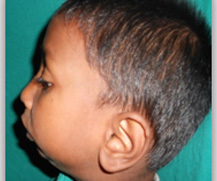
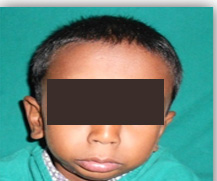
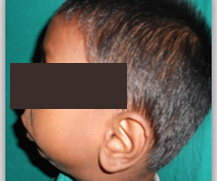
PreOp mouth opening and appearance of patient
Role of Distraction Osteogenesis in TMJ Ankylosis
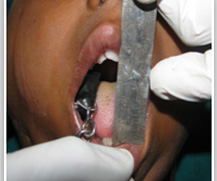
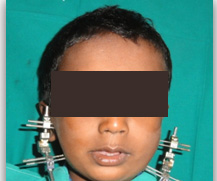
Post Op mouth opening and appearance of patient